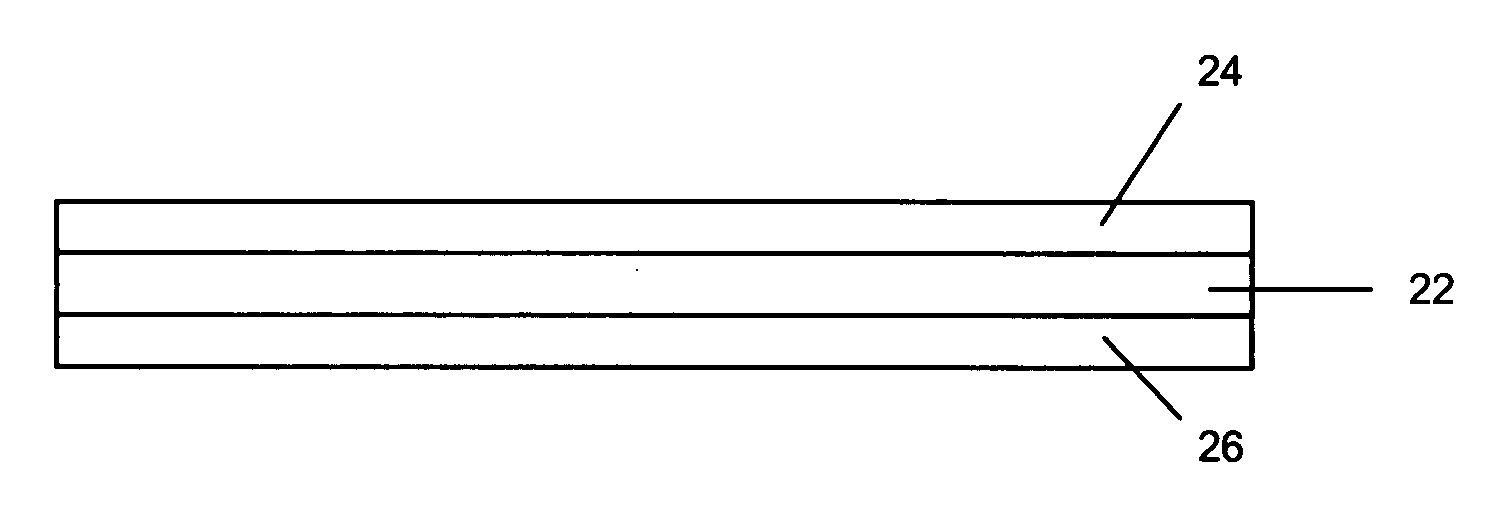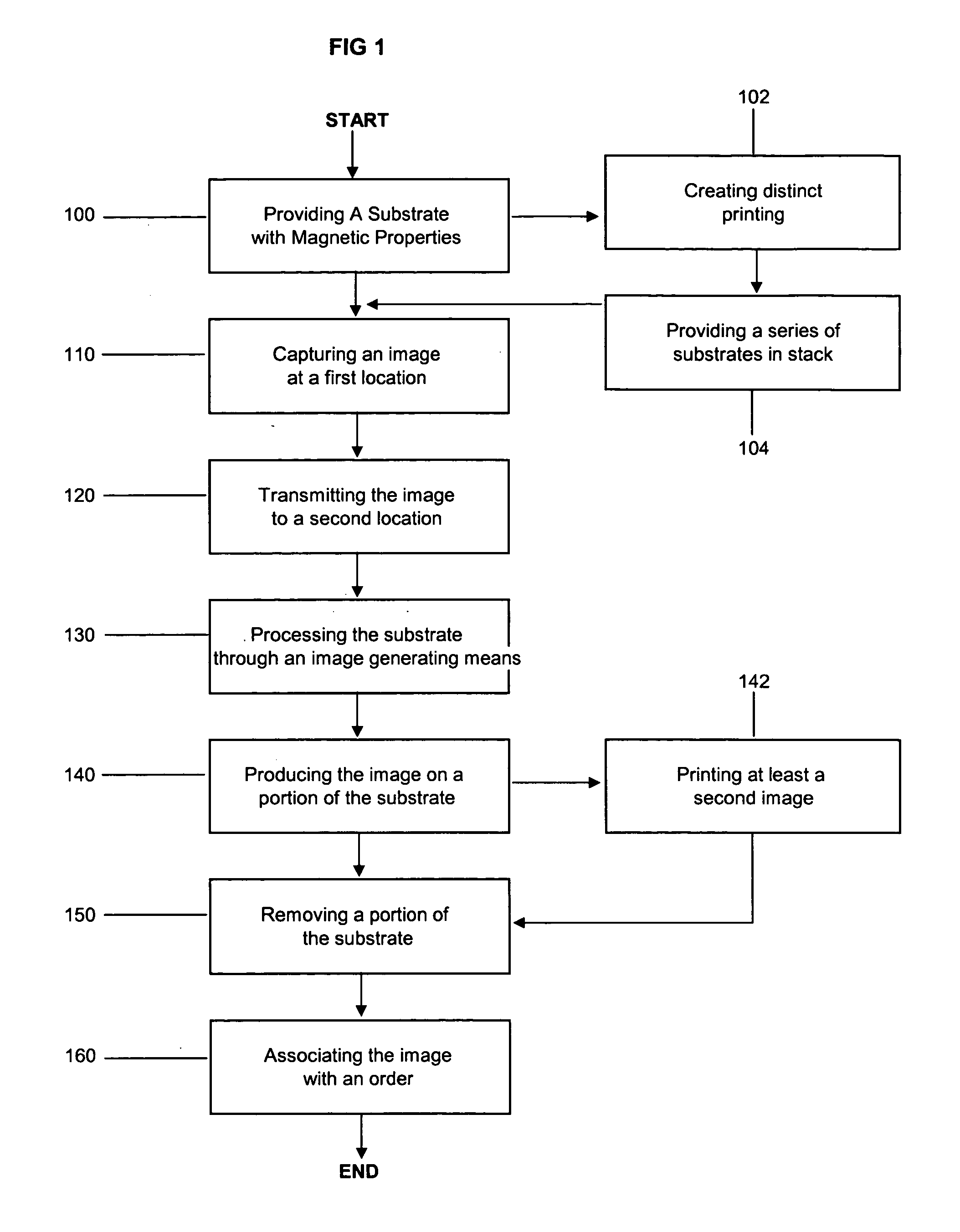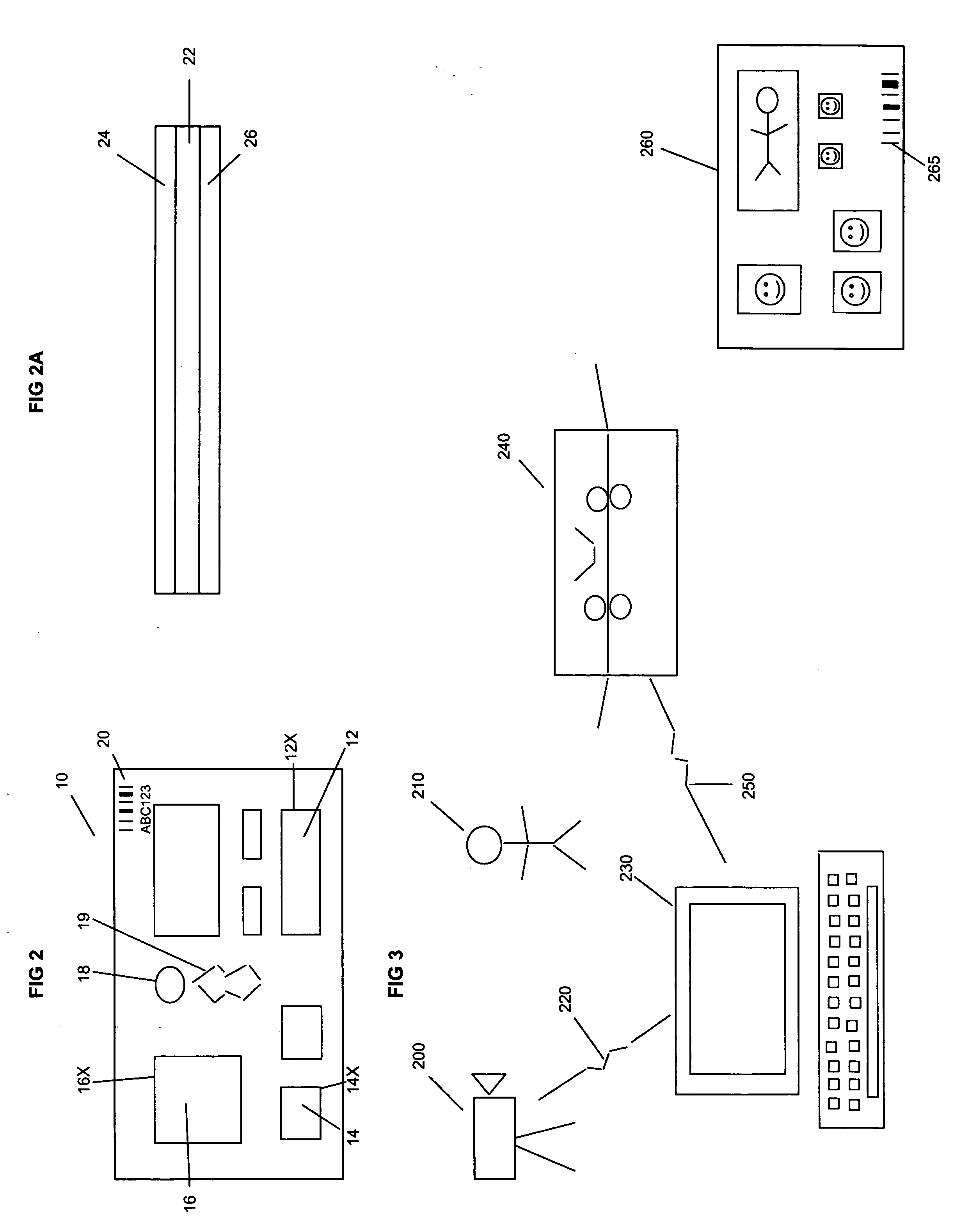This demand also has presented the manufacturer with the difficulties of including this auxiliary magnetic material with traditional forms and product stocks such as
pressure sensitive materials.
In addition to the difficulties associated with having to add what amounts to a large “chunk” or piece of material, one which typically ranges from 12 to 14 mils, onto a substrate is that the magnetic materials when placed in a stack can create a sloped stack (one side of the stack higher than the other due to the
increased thickness of the magnetic material) as well as a stack that is difficult to align or
handle due to the magnetic fields created by the coercive forces between poles in successive magnetic sheets.
This can cause the sheets to splay or shift out of alignment making repetitive and
continuous feeding through
processing equipment difficult and often substantially reducing the efficiency of a manufacturing operation to a series of incremental production of stops and starts so as to accomplish the completion of the job.
The difficulty associated with such prior art constructions is that this construction is often limited in usage to the one advertising arrangement provided with the
assembly.
Due to the
increased thickness of the magnetic material, the substrate along with the
magnet attached thereto cannot easily pass through a
laser or other non-
impact printer due to the “hump” or “bump” created by the
magnet.
This hump can distort the printing of the substrate and potentially cause excessive
wear and tear to the print head of the printer due to the abrupt contact with the raised area of the
magnet.
As might be expected, this can create alignment problems if the magnetic material is applied to the incorrect area of the substrate.
These products suffer from several drawbacks.
Where the product is to be used as a remembrance item, it is highly undesirable to have an item which produces a less than desirable aesthetic feature.
Secondly, a construction having such a differential height arrangement can cause problems for printing and
processing equipment as discussed above.
In addition, the concept utilized by the '474 application would not enable the subsequent processing of the material due to the differential thickness of the magnet on the card or stock.
However, in order to process this particular construction the magnetic material is provided in a deadened state, one in which there is no readily discernable magnetic force or alternatively it is so weak that the magnetic material as provided is incapable of adhering to a metallic surface.
As expected, the additional step of charging the magnet is
time consuming and adds a further layer of expense to the offering being presented.
In addition, even after the charging, the magnetic sheets are difficult to
handle and cannot be wrapped in a flat stack as the coercive forces of each of the magnetic pole regions causes successive sheets to splay or shift out of alignment with one another.
However, in addition to the added costs of the thicker material or inserts, there is the added cost associated with transporting and shipping the material due to the
increased thickness or inserts.
This construction unfortunately suffers from the drawback that the magnet may not adhere to the desired surface due to the relatively
weak field.
Where it has been tried to create an image on a magnetic sheet, that retains a charge, the charge present in the sheet can cause the sheet to migrate out of alignment with the image generator, thus causing the image to appear off center, or be partially
cut off.
This unfortunately leads to significant waste and disappointment.
In addition, where such sheets can be successfully printed, the sheets have a tendency to “lock up” or stick together making quick separation and distribution difficult.
However, this will then likely require the sheets to be magnetized after imaging leading to an increase in processing costs due to the extra handling required as well as the amortization of the equipment.
These particular constructions also rely on significantly thicker magnetic material in forming the substrate and as might be expected this substantially increases the weight of the material for shipping and handling purposes.
 Login to View More
Login to View More 


